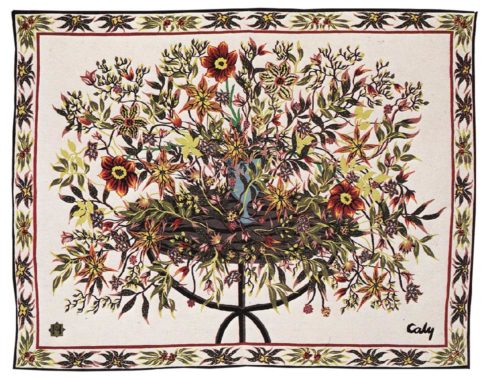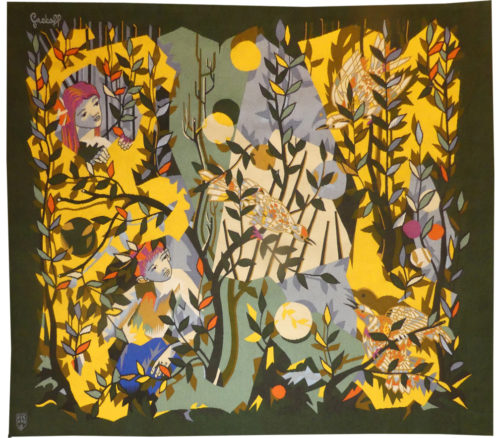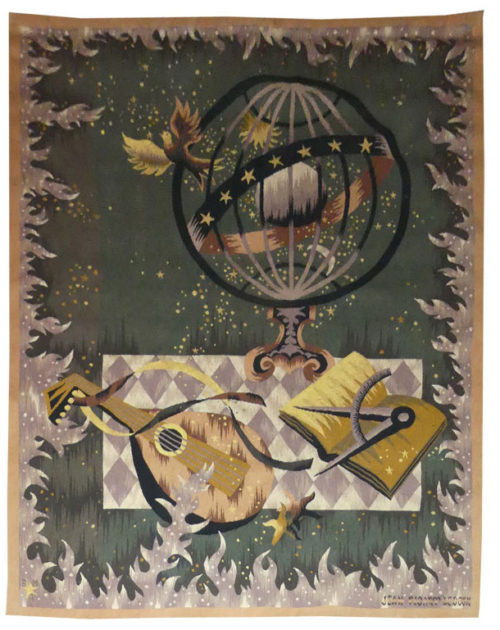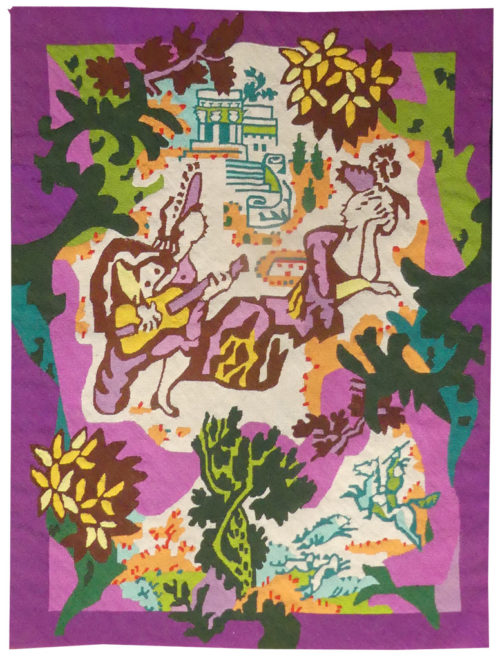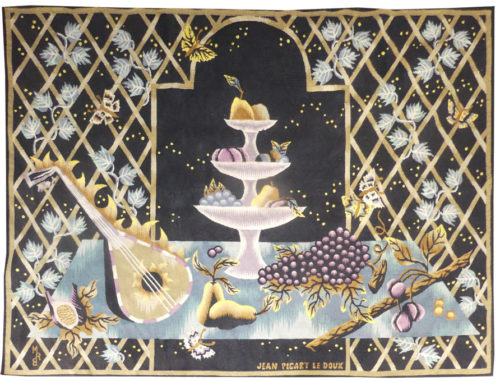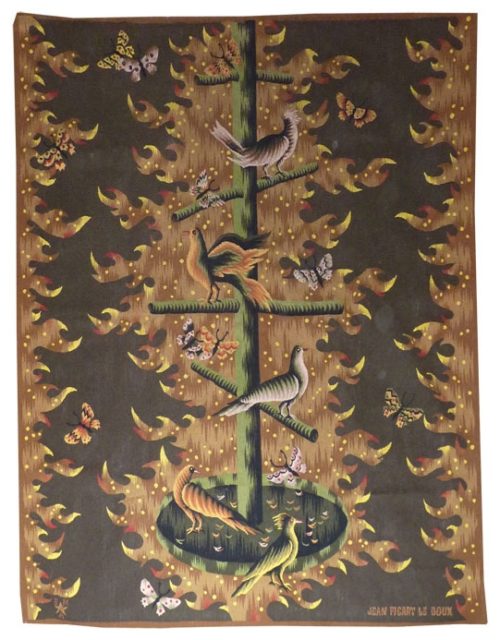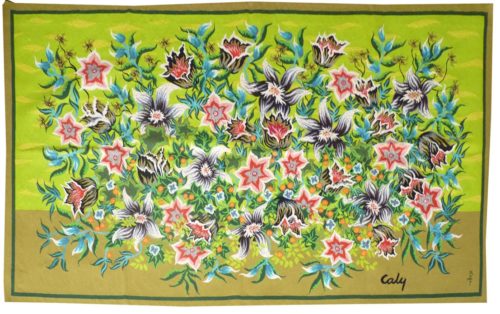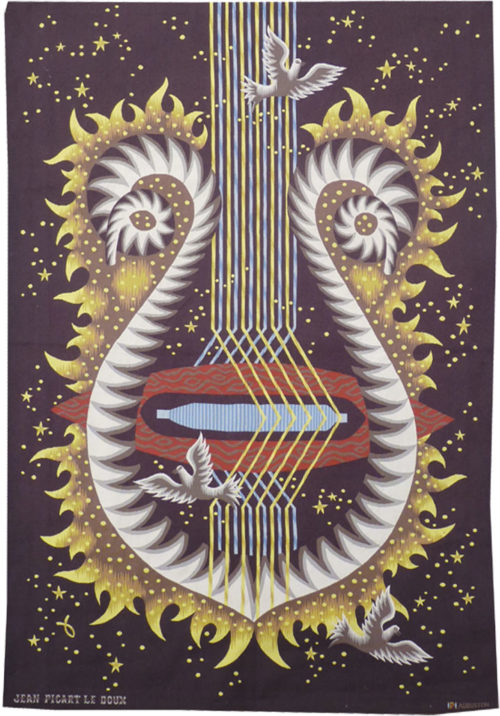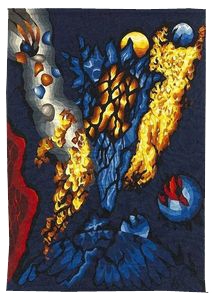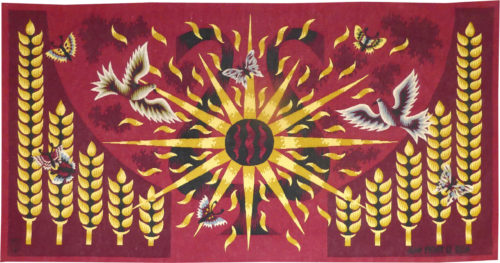Le Méridien étoilé (the starry meridian)
Aubusson tapestry woven in the Berthaut workshop.
circa 1948.
Jean Picart le Doux is one of the foremost figures in the renaissance of the art of tapestry. His earliest contributions to the field date back to 1943 when he designed cartoons for the passenger ship “la Marseillaise”. A close associate of Lurçat, whose theories he would adopt (limited palette, numbered cartoons…), he was a founding member of the A.P.C.T. (Association des Peintres-cartonniers de Tapisserie), and soon after, a teacher at the Ecole Nationale Supérieure des Arts Décoratifs. The state gave him several commissions most of them at the Aubusson workshop, and some at the Gobelins : the most spectacular of these being for the University of Caen, the Theatre in Le Mans, the passenger ship France or the Prefecture of the Creuse département … In as much as Picart le Doux’s aesthetic is close to that of Lurçat, so also is his inspiration and his subject matter, although in a register which is more decorative than symbolic, where he brings together heavenly bodies (the sun, the moon, the stars…), the elements, nature (wheat, vines, fish, birds…), man, literary quotation …
This cartoon is extracted from « Cosmogonie » (Bruzeau n°11), from 1948, here presented in a vertical format and without featuring the quotation from Goethe. The theme of the Astrolabe will be recurrent in his work, notably his eponymous tapestry of 1955.
Bibliography :
Marthe Belle-Jouffray, Jean Picart le Doux, Publications filmées d’art et d’histoire, 1966
Maurice Bruzeau, Jean Picart le Doux, Murs de soleil, Editions Cercle d’art, 1972
Exhibition Catalogue, Jean Picart le Doux, tapisseries, Musée de Saint-Denis, 1976
Exhibition Catalogue Jean Picart le Doux, Musée de la Poste, 1980


